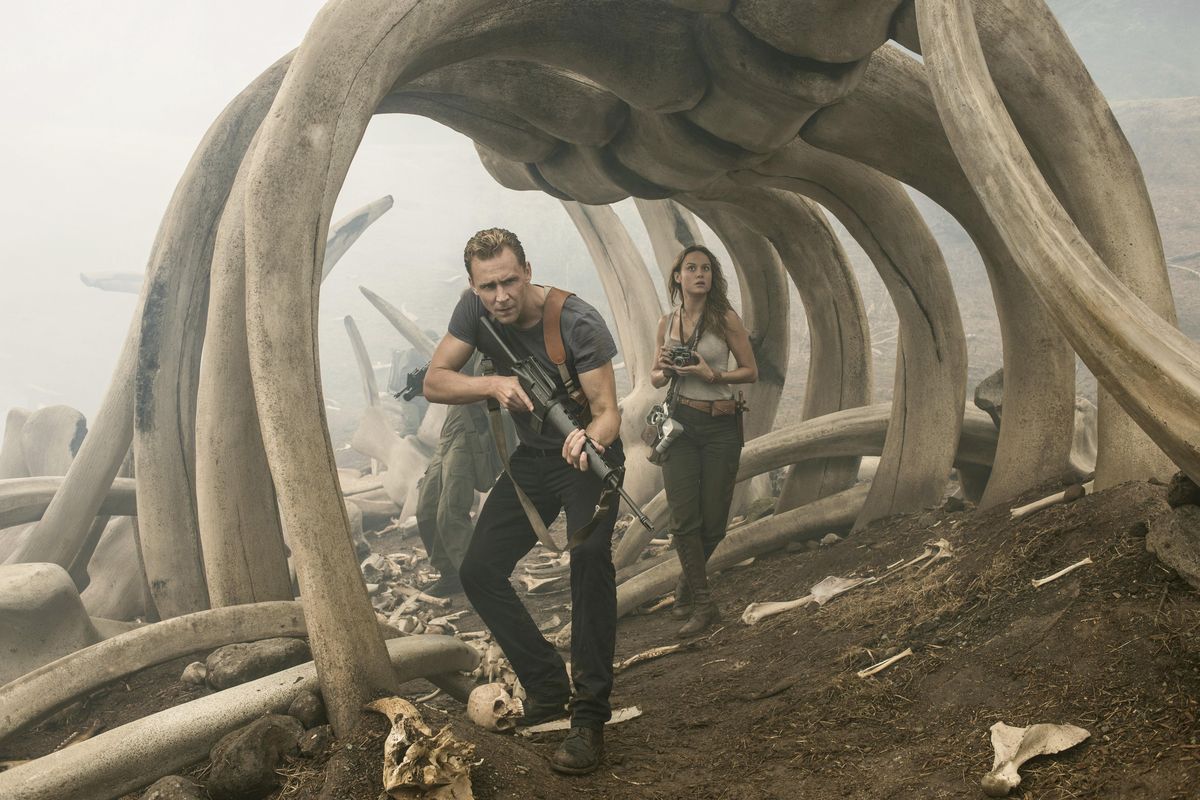Movie review: ‘Kong’ injects new life into classic story

Director Jordan Vogt-Roberts has said in interviews that he pitched “Kong: Skull Island” to Warner Bros. as “King Kong” meets “Apocalypse Now.” Working with an 84-year-old cinematic character, Vogt-Roberts has injected new life into the property by borrowing heavily from a Francis Ford Coppola New Hollywood classic that’s now 38 years-old. The result shows its influence – it could have easily been titled “Apocalypse Kong” – but it’s surprisingly fun and fresh. It’s only March, but with the one-two punch of “Logan” and now “Kong,” have blockbusters become great again?
“Kong: Skull Island” takes place in 1973, when a motley crew of scientists, cartographers, a photojournalist and a tracker get a military escort to an unknown island from a group of soldiers on their way out of Vietnam. The plan is to check things out before the Russians do, naturally.
Kong is isn’t the only game in town on this island, as they discover from kooky, long-lost American pilot Marlow, (John C. Reilly) shot down in 1944, who survived thanks to the native tribe. Kong is the protector against what he calls the “skullcrushers,” serpentine dragon-monsters that come up from the earth’s hollow core.
The film is as overflowing with characters as it is with prehistoric monsters, which keeps things moving at a rapid clip. When their helicopters are initially swatted out of the air by the mountain-sized primate, everyone scatters into different groups – there are the soldiers, lead by Col. Packard (Samuel L. Jackson), who goes dark, fast. Denied a satisfactory culmination to Vietnam, he swears revenge on Kong. The other group is led by the peaceniks, if you will, a British tracker named Conrad (Tom Hiddleston) and photojournalist Mason Weaver (Brie Larson), who preach co-existence over obliteration.
“Skull Island” is never boring, but it never sits still. The team of screenwriters privilege the characters, which is a good thing (as is the easy diversity in the casting), but there are just too many here. Coupled with story beats that have to be hit (Kong bonds with a white lady; Kong battles a huge creature; Kong gently picks up a white lady), there’s just no room for anyone to breathe.
Vogt-Roberts swings for the fences with a bold, bright style, and he leaves everything on the screen. The film is sumptuous and saturated with color, the camera almost never stops moving and visual jokes and puns punctuate the action. The soundtrack is back-to-back ‘70s classic rock hits, but he knows when to back away for a few moments of stillness and quiet.
If anything, the film is almost too indebted to “Apocalypse Now,” and the book from which it was adapted, Joseph Conrad’s “Heart of Darkness.” There are the characters named Conrad and Marlow, as well as the shots of silhouettes against a burning orange sun, which are gorgeous, but overused and therefore less powerful, almost a parody. Is this really a King Kong movie or is it just an “Apocalypse Now” redux?
The anti-war, anti-violence message serves as the moral of the story, but the more interesting theme is embodied by Jackson as the colonel who loses his grip with reality in the jungle. Jackson’s riveting but brief performance proves why “Heart of Darkness” remains such an indelible, and influential, tale.